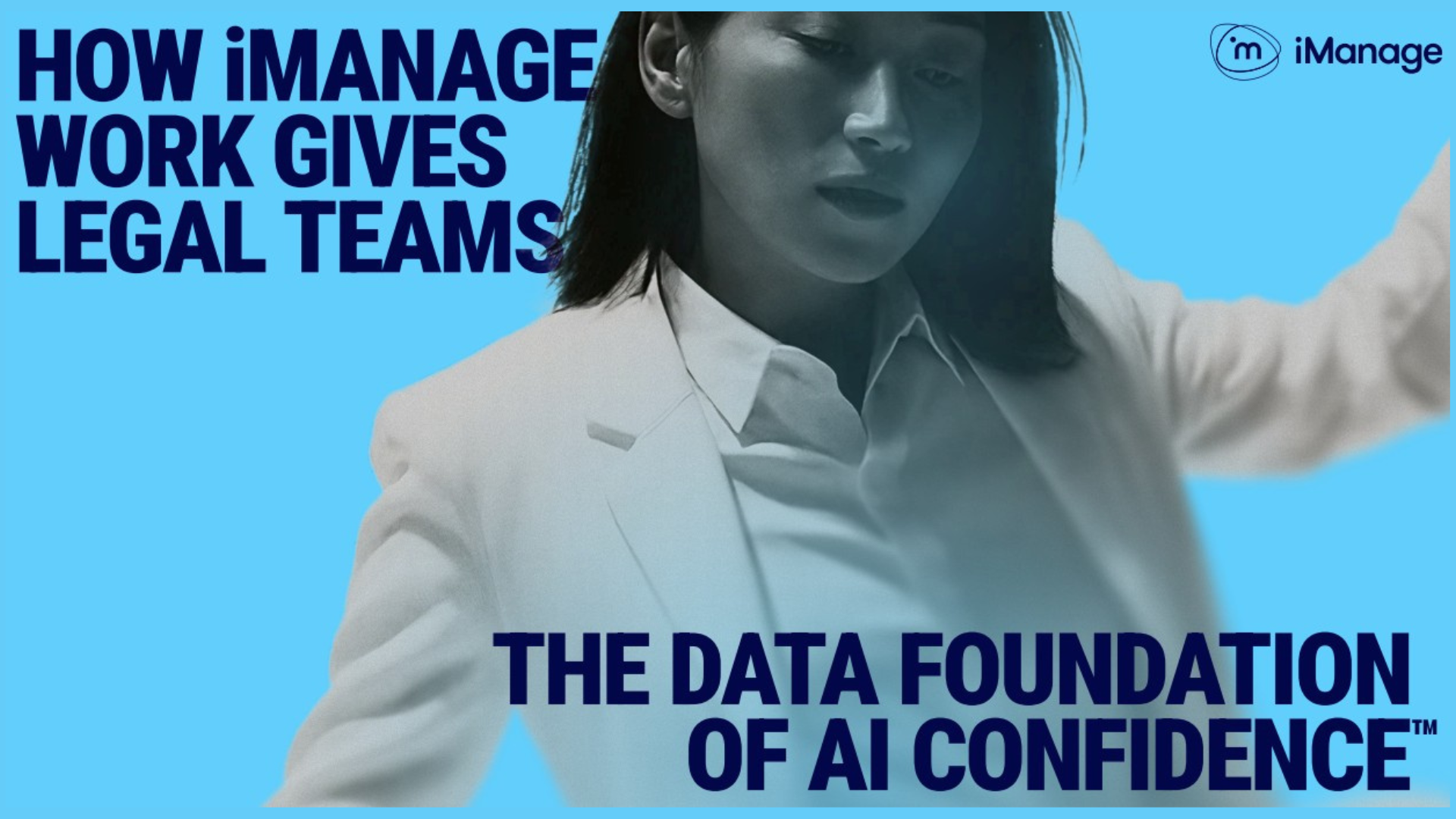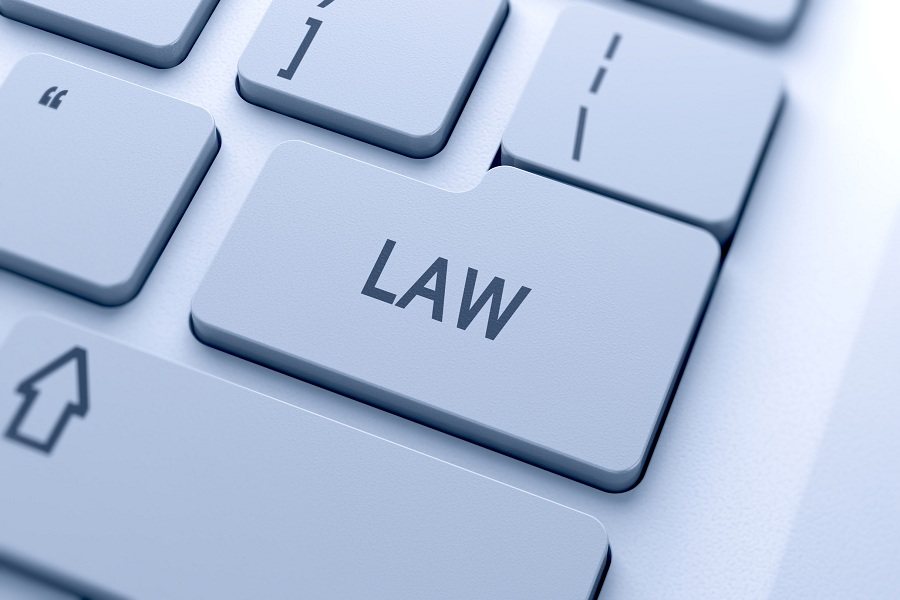Sponsored by iManage
AI legal confidence: What is it and how do you get there?
AI is reshaping legal practice, but doing so successfully comes down to building trust and confidence...

Artificial Intelligence (AI) is no longer a distant concept for the legal profession — it’s here, embedded in research platforms, contract review tools, litigation analytics, and even client-facing chatbots. But as law firms and legal departments increasingly adopt AI, a critical question emerges: How do you build trust in these tools?
In the rapidly evolving landscape of legal technology, the concept of AI confidence is emerging as a critical benchmark for law firms, in-house counsel, and legal tech vendors alike. But what does that really mean? Why does it matter? And how can legal professionals achieve it in a world where AI can be both a powerful ally and a potential liability?
Confidence in this context is the ability to rely on AI tools with clarity about their capabilities, limitations, and the implications of their use. It’s about trusting your own decisions and those of your teams. Knowing you have built a solid foundation and having the reassurance that the tools you’re using are tied to tangible use cases that remove friction from everyday workflows.
“By adopting the technology, [general counsel and chief legal officers] will improve their practical understanding to better advise business colleagues whilst also establishing confidence and trust in new AI capabilities for the wider Legal department,” according to Deloitte’s AI for In-House Legal: 2025 Predictions report {PDF download].
Legal professionals need to be able to rely on AI systems with a high degree of trust, knowing that the technology performs tasks efficiently and aligns with ethical standards, regulatory requirements, and professional responsibilities. It’s not just about using AI — it’s about using it wisely, transparently, and with full awareness of its limitations and risks.
In the legal profession, AI confidence means:
- Understanding the technology behind the tools you use
- Trusting the outputs because they’re explainable, auditable, and aligned with legal standards
- Knowing the boundaries of AI — what it can and cannot do
- Integrating AI into workflows without compromising ethics, accuracy, or client service
- Where relevant, working with credible and trusted partners to harness the power of their expertise and experience in this area
Growing confidence in AI
Achieving AI confidence begins with understanding the nature of these tools in legal practice. Most current AI systems operate within agentic workflows, where AI tools assist with tasks like document review, contract analysis, or legal research, but still require human oversight.
These systems are semi-autonomous, meaning they can suggest actions or generate drafts, but a lawyer must approve and finalize the work. This model offers efficiency while maintaining a safeguard against errors or ethical breaches.
To build real and lasting AI legal confidence, law firms must adopt a framework grounded in four core principles: transparency, autonomy, reliability, and visibility.
Transparency means understanding how the AI system reaches its conclusions. Autonomy must be balanced with human judgment, ensuring that AI doesn’t overstep its bounds.
Reliability demands consistent, accurate performance across diverse legal contexts. And visibility ensures that lawyers can audit and trace the AI’s decision-making process.
Ethical obligations also play a central role. According to guidance from the State Bar of California and legal ethics experts, lawyers must ensure that AI tools comply with duties of confidentiality, competence, and communication. This includes anonymizing client data before inputting it into AI systems, verifying outputs before relying on them, and maintaining independent judgment even when AI suggests a course of action.
Truly transformational
Training and education are essential. Lawyers need to become fluent in AI literacy — not just how to use the tools, but how they work, what data they rely on, and where they might fail. In her LinkedIn article, Top 8 Online AI Courses for Lawyers to Stay Ahead in Legal Tech, Katerina Ilieava, a tax lawyer and technology and tax expert, puts it bluntly: “Whether you're a practicing attorney, in-house counsel, or a law student looking to stay ahead, investing in AI education is no longer optional; it’s essential.”
Firms should invest in cross-disciplinary teams that include technologists, ethicists, and legal experts to evaluate and monitor AI systems.
Ultimately, AI legal confidence is not a destination — it’s a journey. It requires ongoing vigilance, adaptation, and a commitment to ethical excellence. As AI becomes more embedded in the legal profession, those who embrace this journey will be best positioned to harness its transformative power while safeguarding the integrity of justice.
AI is undoubtedly transforming the legal profession — but transformation without understanding is risky. AI confidence is built on trust, knowledge, transparency, testing, governance, and ongoing learning. Legal professionals don’t need to become technologists. But they do need to become informed, critical users of AI. Because in the courtroom, the boardroom, and the client meeting, confidence isn’t just a feeling — it’s a critical foundation.
Sign up today and you will receive a free copy of our Future Focus 2025 report - the leading guidance on AI, cybersecurity and other IT challenges as per 700+ senior executives

Lawrence Miller, CISSP, has worked in information security and technology management for more than 25 years.
He received his MBA in Supply Chain Management from Indiana University and has earned numerous technical and professional certifications throughout his career.
He is currently working as an IT security solutions consultant. He’s previously worked as the vice president of IT for a major Verizon reseller, director of IT and e-commerce for a retail merchandising company, and IT operations manager for a top 100 U.S. law firm.
-
 Pure Storage’s expanded partner ecosystem helps fuel Q3 growth
Pure Storage’s expanded partner ecosystem helps fuel Q3 growthNews The data storage vendor has announced a 16% year-over-year revenue hike in its latest earnings report, driven by continued channel and product investment
-
 Partners have been ‘critical from day one’ at AWS, and the company’s agentic AI drive means they’re more important than ever
Partners have been ‘critical from day one’ at AWS, and the company’s agentic AI drive means they’re more important than everNews The hyperscaler is leaning on its extensive ties with channel partners and systems integrators to drive AI adoption
-
 The Data Foundation of AI Confidence
The Data Foundation of AI Confidencewhitepaper
-
 Tired of legal AI tools that overpromise but underdeliver? The secret to success is in your firm’s data
Tired of legal AI tools that overpromise but underdeliver? The secret to success is in your firm’s dataSponsored Don't let legal AI tools overpromise and underdeliver: the secret to success isn't the software, but building a secure, stable, and connected data foundation that transforms your firm's complex, siloed information into structured knowledge.
-
 Yes, legal AI. But what can you actually do with it? Let’s take a look…
Yes, legal AI. But what can you actually do with it? Let’s take a look…Sponsored Legal AI is a knowledge multiplier that can accelerate research, sharpen insights, and organize information, provided legal teams have confidence in its transparent and auditable application
-
 What can AI do to empower those working in the legal sector today, tomorrow, and beyond?
What can AI do to empower those working in the legal sector today, tomorrow, and beyond?Supported AI is transforming the legal profession — from streamlining today’s workflows to shaping tomorrow’s strategies. For firms, the choice is clear: embrace trusted AI tools now or risk falling behind in a rapidly evolving landscape
-
 AI in the legal sector: How to separate the signal from the noise
AI in the legal sector: How to separate the signal from the noiseSupported From contract review to litigation strategy, AI promises efficiency. But with so much noise in the market, legal professionals must know how to spot tools that deliver real value
-
 How AI can help rather than hinder knowledge workers in the legal profession
How AI can help rather than hinder knowledge workers in the legal professionSupported AI won’t replace lawyers — it empowers them. Free from routine tasks, legal pros can focus on strategy, judgment, and client success
-
 Legal professionals face huge risks when using AI at work
Legal professionals face huge risks when using AI at workAnalysis Legal professionals at a US law firm have been sanctioned over their use of AI after it was found to have created fake case law.
-
 The future of AI in the legal industry
The future of AI in the legal industryIn-depth It’s an industry that can be traced back to ancient Greece and Rome but how will artificial intelligence catapult the legal profession into the 21st century?
